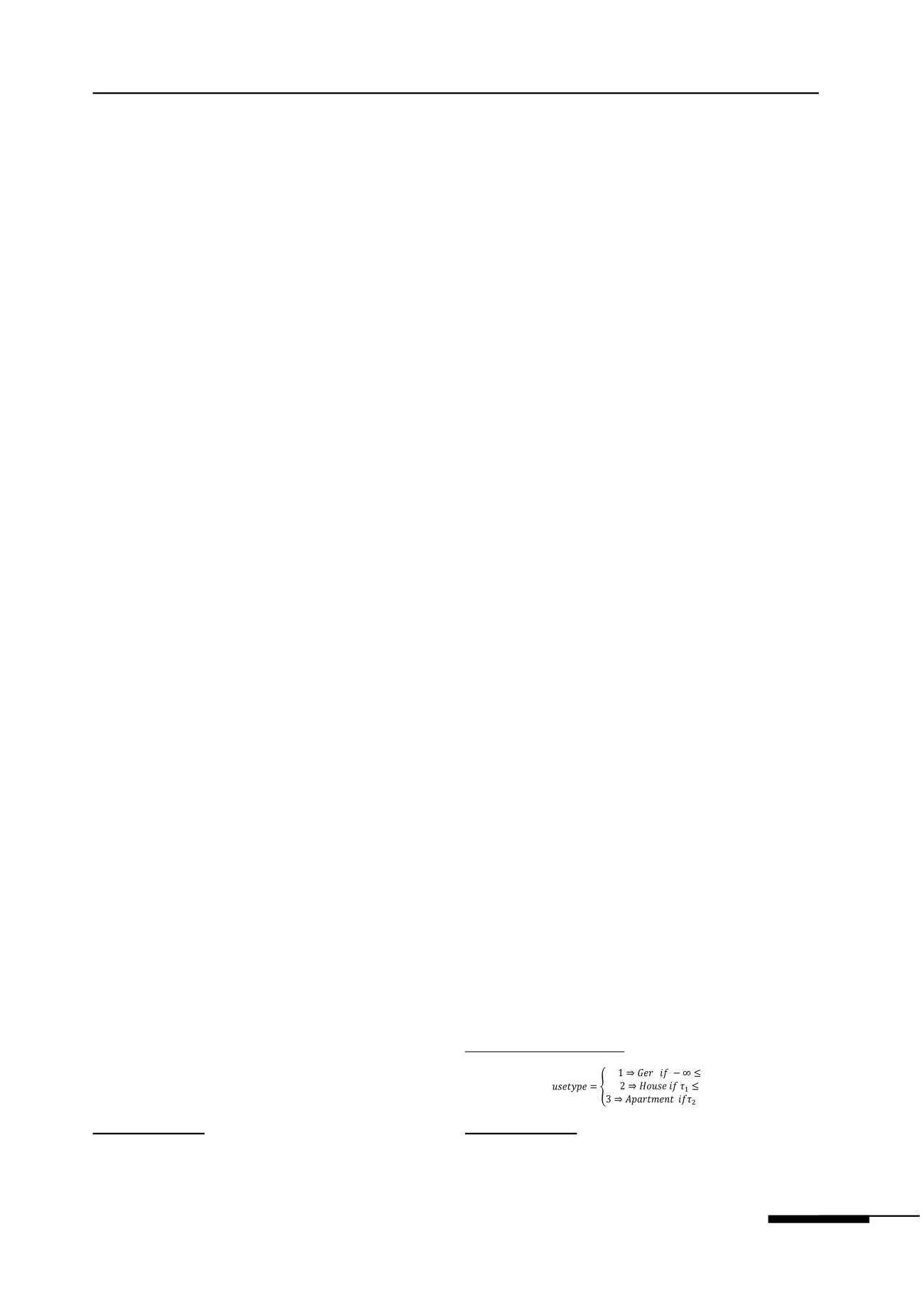

МОНГОЛЫН ХҮН АМЫН СЭТГҮҮЛ Дугаар (367) 20, 2011
81
Second, family income is from the
employment of the household members. If
they have no work, there would be no income
as well as they will be live in poor condition.
“There are strong linkages between the
employment of the head of a household and
that household’s poverty status. Working with
data from the 2002-2003 Living Standards
Measurement Survey, the report calculates
a “poverty likelihood ratio” (PLR) for
households, the ratio of each group’s poverty
incidence to that of the overall population
sorted according to whether the head is
working and the sort of work. Households
headed by an individual who is of working
age but is economically inactive – i.e. neither
working nor looking for work – are the most
likely to be poor, with a PLR of 1.42, notably
more likely even than households headed by
an unemployed individual, who have a PLR of
1.33.”
36
Thus I am choosing the fact, which is
head of the household works or not, as a factor.
In addition, it is reasonable to choose the
percentage of working person in household as
a factor as well.
Third, some individual characteristic of
the head of household such as age, sex and
attained highest education level could be
useful in this analysis. The reason why I am
choosing is particular households’ general
status depends on the head of family according
to the social customs of Mongolia. He or
she, the head of household, always takes the
principal decision regarding to the household.
Furthermore, age of the head of household can
represent the age of family whether they are
young or old. Initially, young families don’t
have wealth but as time goes by they would
accumulate wealth and would live in a better
living condition. For the education, I have
studied the correlation between education level
and the type of dwelling and the result showed
significant association
37
.
Fourth, the internal migration tends to the
move to the urban area in order to find job
as well as to move closer to services for
education and health during the last decade.
36
Government of Mongolia, UNDP, 2008. Mongolia Human
Development Report 2007: Employment and Poverty, (pp. 13-15)
2007, Ulaanbaatar
37
Refer to the Table 1 in the appendix.
They move to the urban area due to dzud
38
which makes many herders to lose their
livestock. Mainly, migrant household lives
in a
Ger
and is expanding the
Ger
district
of Ulaanbaatar. Thus I decided to choose a
variable that could stand for migration status of
household. According to the data availability,
there are two type of variable, one of them
is the head of household is migrant or not,
the other one is percentage of migrants in
household.
Fifth, the number of total person and children
in the household could be considered as a
factor. As number of person in household
increases, the opportunity of access to the
better living condition could be limited if the
additional person does not earn the income.
Finally, I have noted before about the
importance of household income. Now it
is time to consider the usage of household
income. The percentage of food expenses
in total expenditure could be reasonable
explanatory variable in our analysis. The
income should first cover all the food expenses
and the surplus would be used to finance non
food and service expenses. The point is that the
chosen variable can stand for the sufficiency
of household income. If the percentage of
food expenses is high then the opportunity of
improving living condition would be limited.
ECONOMETRIC
MODELS
AND
ESTIMATION
Model specification of the study
Since the type of conventional dwelling
is the categorical data, it can be viewed as
ordinal or nominal variables. Thus I would
employ the ordered logit model as well as
multinominal logit model in order to find out
appropriate regression model.
Ordinal Logit Model
38
A
zud
or
dzud
(Mongolian: зуд) is a Mongolian term for an
extremely snowy winter in which livestock are unable to find fodder
through the snow cover, and large numbers of animals die due to
starvation and the cold. (Wikipedia)









